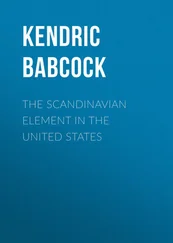Hubert Bancroft - The Native Races [of the Pacific states], Volume 5, Primitive History
Здесь есть возможность читать онлайн «Hubert Bancroft - The Native Races [of the Pacific states], Volume 5, Primitive History» — ознакомительный отрывок электронной книги совершенно бесплатно, а после прочтения отрывка купить полную версию. В некоторых случаях можно слушать аудио, скачать через торрент в формате fb2 и присутствует краткое содержание. Жанр: foreign_antique, foreign_prose, на английском языке. Описание произведения, (предисловие) а так же отзывы посетителей доступны на портале библиотеки ЛибКат.
- Название:The Native Races [of the Pacific states], Volume 5, Primitive History
- Автор:
- Жанр:
- Год:неизвестен
- ISBN:нет данных
- Рейтинг книги:5 / 5. Голосов: 1
-
Избранное:Добавить в избранное
- Отзывы:
-
Ваша оценка:
- 100
- 1
- 2
- 3
- 4
- 5
The Native Races [of the Pacific states], Volume 5, Primitive History: краткое содержание, описание и аннотация
Предлагаем к чтению аннотацию, описание, краткое содержание или предисловие (зависит от того, что написал сам автор книги «The Native Races [of the Pacific states], Volume 5, Primitive History»). Если вы не нашли необходимую информацию о книге — напишите в комментариях, мы постараемся отыскать её.
The Native Races [of the Pacific states], Volume 5, Primitive History — читать онлайн ознакомительный отрывок
Ниже представлен текст книги, разбитый по страницам. Система сохранения места последней прочитанной страницы, позволяет с удобством читать онлайн бесплатно книгу «The Native Races [of the Pacific states], Volume 5, Primitive History», без необходимости каждый раз заново искать на чём Вы остановились. Поставьте закладку, и сможете в любой момент перейти на страницу, на которой закончили чтение.
Интервал:
Закладка:
Relics unmistakeably Hebrew have been very rarely found in America. I know of only two instances of such a discovery, and in neither of these cases is it certain or even probable that the relic existed in America before the Conquest. The first and best known instance is related by Ethan Smith, according to Priest, 209as follows:
"Joseph Merrick, Esq., a highly respectable character in the church at Pittsfield, gave the following account: That in 1815, he was levelling some ground under and near an old wood-shed, standing on a place of his, situated on Indian Hill . He ploughed and conveyed away old chips and earth, to some depth. After the work was done, walking over the place, he discovered, near where the earth had been dug the deepest, a black strap, as it appeared, about six inches in length, and one and a half in breadth, and about the thickness of a leather trace to a harness. He perceived it had, at each end, a loop, of some hard substance, probably for the purpose of carrying it. He conveyed it to his house, and threw it into an old tool box. He afterwards found it thrown out at the door, and again conveyed it to the box.
"After some time, he thought he would examine it; but in attempting to cut it, found it as hard as bone; he succeeded, however, in getting it open, and found it was formed of two pieces of thick raw-hide, sewed and made water tight with the sinews of some animal, and gummed over; and in the fold was contained four folded pieces of parchment. They were of a dark yellow hue, and contained some kind of writing. The neighbors coming in to see the strange discovery, tore one of the pieces to atoms, in the true Hun and Vandal style. The other three pieces Mr. Merrick saved, and sent them to Cambridge, where they were examined, and discovered to have been written with a pen, in Hebrew , plain and legible. The writing on the three remaining pieces of parchment, was quotations from the Old Testament." 210
The other discovery was made in Ohio, and was seen by my father, Mr A. A. Bancroft, who thus describes it: "About eight miles south-east of Newark there was formerly a large mound composed of masses of free-stone, which had been brought from some distance and thrown into a heap without much placing or care. In early days, stone being scarce in that region, the settlers carried away the mound piece by piece to use for building-purposes, so that in a few years there was little more than a large flattened heap of rubbish remaining. Some fifteen years ago, the county surveyor (I have forgotten his name), who had for some time been searching ancient works, turned his attention to this particular pile. He employed a number of men and proceeded at once to open it. Before long he was rewarded by finding in the centre and near the surface a bed of the tough clay generally known as pipe-clay, which must have been brought from a distance of some twelve miles. Imbedded in the clay was a coffin, dug out of a burr-oak log, and in a pretty good state of preservation. In the coffin was a skeleton, with quite a number of stone ornaments and emblems, and some open brass rings, suitable for bracelets or anklets. These being removed, they dug down deeper, and soon discovered a stone dressed to an oblong shape, about eighteen inches long and twelve wide, which proved to be a casket, neatly fitted and completely water-tight, containing a slab of stone of hard and fine quality, an inch and a half thick, eight inches long, four inches and a half wide at one end, and tapering to three inches at the other. Upon the face of the slab was the figure of a man, apparently a priest, with a long flowing beard, and a robe reaching to his feet. Over his head was a curved line of characters, and upon the edges and back of the stone were closely and neatly carved letters. The slab, which I saw myself, was shown to the episcopalian clergyman of Newark, and he pronounced the writing to be the ten Commandments in ancient Hebrew." 211
The account given by the Book of Mormon, of the settlement of America by the Jews, is as follows: 212
After the confusion of tongues, when men were scattered over the whole face of the earth, the Jaredites, a just people, having found favor in the sight of the Eternal, miraculously crossed the ocean in eight vessels, and landed in North America, where, they built large cities and developed into flourishing and highly civilized nations. But their descendants did evil before the Lord, in spite of repeated prophetic warnings, and were finally destroyed for their wickedness, about fifteen hundred years after their arrival, and six hundred before the birth of Christ.
These first inhabitants of America were replaced by an emigration of Israelites, who were miraculously brought from Jerusalem in the first year of the reign of Zedekiah, king of Judah. For some time they traveled in a south-easterly direction, following the coast of the Red Sea; afterwards they took a more easterly course, and finally arrived at the borders of the Great Ocean. Here, at the command of God, they constructed a vessel, which bore them safely across the Pacific Ocean to the western coast of South America, where they landed. In the eleventh year of the reign of this same Zedekiah, when the Jews were carried captive to Babylon, some descendants of Judah came from Jerusalem to North America, whence they emigrated to the northern parts of South America. Their descendants were discovered by the first emigrants about four hundred years afterwards.
The first emigrants, almost immediately after their arrival, separated themselves into two distinct nations. The people of one of these divisions called themselves Nephites, from the prophet Nephi, who had conducted them to America. These were persecuted, on account of their righteousness, by the others, who called themselves Lamanites, from Laman, their chief, a wicked and corrupt man. The Nephites retreated to the northern parts of South America, while the Lamanites occupied the central and southern regions. The Nephites possessed a copy of the five books of Moses, and of the prophets as far as Jeremiah, or until the time when they left Jerusalem. These writings were engraved on plates of brass. After their arrival in America they manufactured similar plates, on which they engraved their history and prophetic visions. All these records, kept by men inspired of the Holy Ghost, were carefully preserved, and transmitted from generation to generation.
God gave them the whole continent of America as the promised land, declaring that it should be a heritage for them and for their children, provided they kept his commandments. The Nephites, blessed by God, prospered and spread east, west, and north. They dwelt in immense cities, with temples and fortresses; they cultivated the earth, bred domestic animals, and worked mines of gold, silver, lead, and iron. The arts and sciences flourished among them, and as long as they kept God's commandments, they enjoyed all the benefits of civilization and national prosperity.
The Lamanites, on the contrary, by reason of the hardness of their hearts, were from the first deserted of God. Before their backsliding they were white and comely as the Nephites; but in consequence of the divine curse, they sank into the lowest barbarism. Implacable enemies of the Nephites, they waged war against that people, and strove by every means in their power to destroy them. But they were gradually repulsed with great loss, and the innumerable tumuli which are still to be seen in all parts of the two Americas, cover the remains of the warriors slain in these bloody conflicts.
The second colony of Hebrews, mentioned above, bore the name of Zarahemla. They also had many civil wars, and as they had not brought any historical records with them from Jerusalem, they soon fell into a state of atheism. At the time when they were discovered by the Nephites they were very numerous, but lived in a condition of semi-barbarism. The Nephites, however, united themselves with them, and taught them the sacred Scriptures, so that before long the two nations became as one. Shortly afterwards the Nephites built several vessels, by means of which they sent expeditions towards the north, and founded numerous colonies. Others emigrated by land, and in a short time the whole of the northern continent was peopled. At this time North America was entirely destitute of wood, the forests having been destroyed by the Jaredites, the first colonists, who came from the tower of Babel; but the Nephites constructed houses of cement and brought wood by sea from the south; taking care, besides, to cultivate immense plantations. Large cities sprang up in various parts of the continent, both among the Lamanites and the Nephites. The latter continued to observe the law of Moses; numerous prophets arose among them; they inscribed their prophecies and historical annals on plates of gold or other metal, and upon various other materials. They discovered also the sacred records of the Jaredites, engraved on plates of gold; these they translated into their own language, by the help of God and the Urim Thummim. The Jaredite archives contained the history of man from the creation of the world to the building of the tower of Babel, and from that time to the total destruction of the Jaredites, embracing a period of thirty-four or thirty-five centuries. They also contained the marvelous prophecies which foretold what would happen in the world until the end of all things, and the creation of a new heaven and a new earth.
Читать дальшеИнтервал:
Закладка:
Похожие книги на «The Native Races [of the Pacific states], Volume 5, Primitive History»
Представляем Вашему вниманию похожие книги на «The Native Races [of the Pacific states], Volume 5, Primitive History» списком для выбора. Мы отобрали схожую по названию и смыслу литературу в надежде предоставить читателям больше вариантов отыскать новые, интересные, ещё непрочитанные произведения.
Обсуждение, отзывы о книге «The Native Races [of the Pacific states], Volume 5, Primitive History» и просто собственные мнения читателей. Оставьте ваши комментарии, напишите, что Вы думаете о произведении, его смысле или главных героях. Укажите что конкретно понравилось, а что нет, и почему Вы так считаете.
![Hubert Bancroft The Native Races [of the Pacific states], Volume 5, Primitive History обложка книги](/books/749157/hubert-bancroft-the-native-races-of-the-pacific-s-cover.webp)









![Hubert Bancroft - The Native Races [of the Pacific states], Volume 1, Wild Tribes](/books/750126/hubert-bancroft-the-native-races-of-the-pacific-s-thumb.webp)

